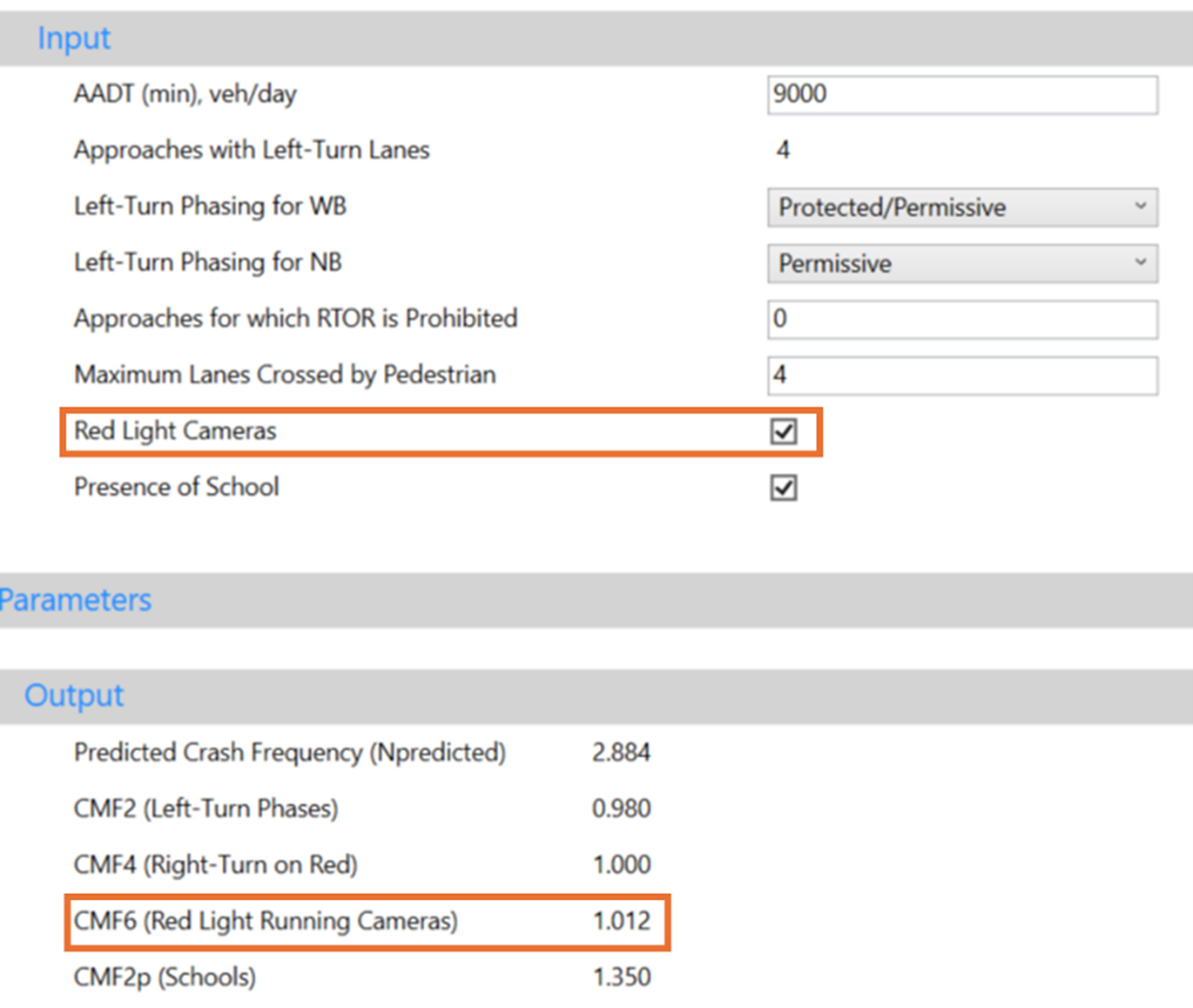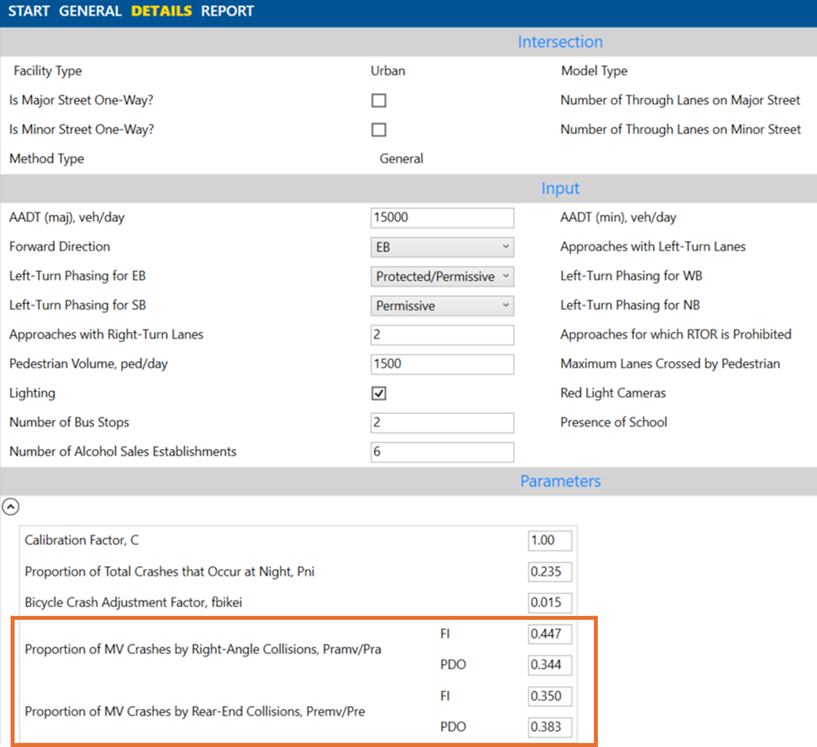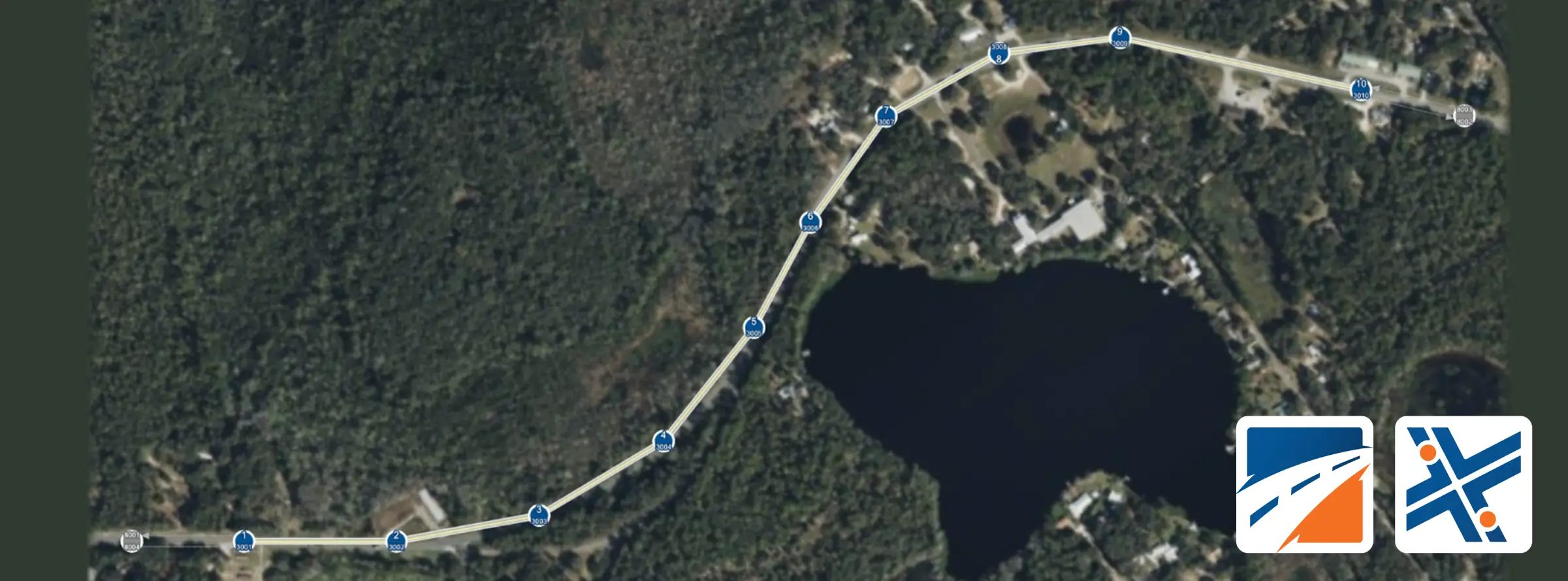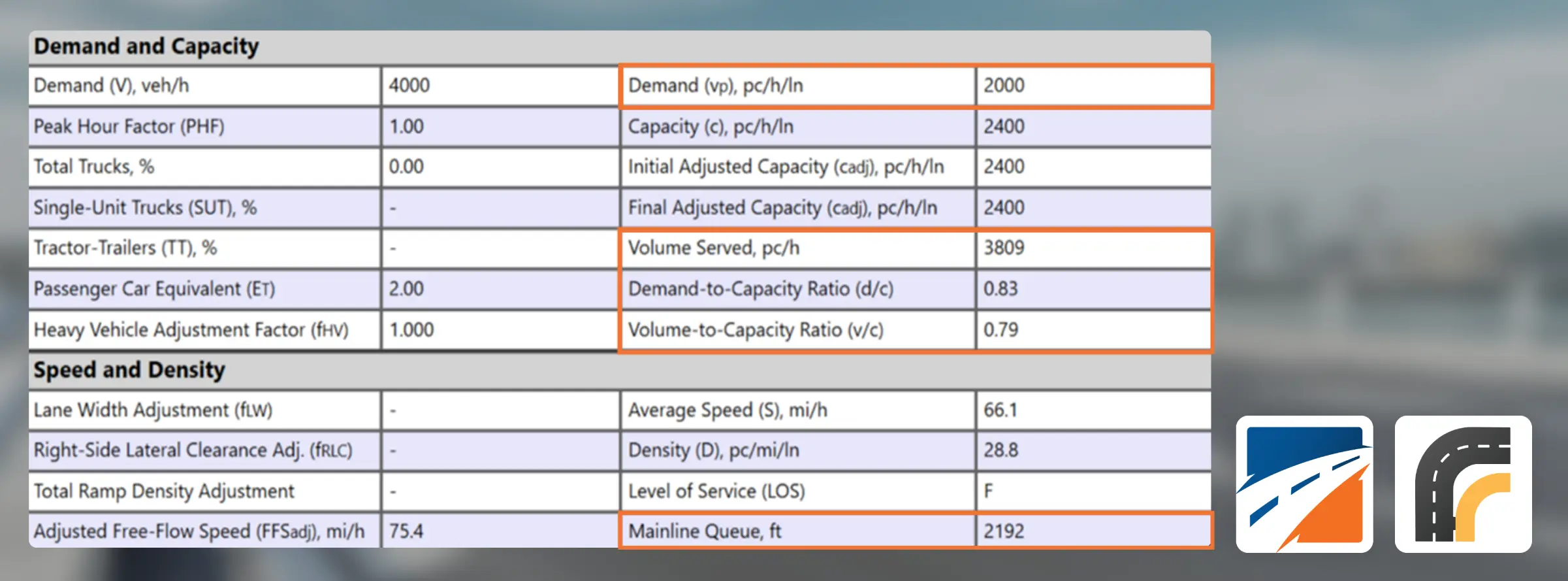Have you ever evaluated the possibility of installing a red-light running camera in your signalized intersection and found that it increases the crash frequency?
When a signalized intersection is modeled using the Highway Safety Software using all default distributions from the Highway Safety Manual, a Crash Modification Factor (CMF) of 1.012 will be computed. This means the total crashes are expected to increase by 1.2% when red-light camera enforcement is present at the intersection.

CMF6 (Red Light Cameras) calculated in HSS using base distributions
Research has demonstrated that red light cameras effectively reduce right-angle crashes but also increase the frequency of rear-end crashes. A study by Persaud et. al, mentioned in the Highway Safety Manual (HSM), suggests a CMF for red light camera installation of 0.74 for right-angle collisions and a CMF of 1.18 for rear-end collisions.
When is it recommended to install red light cameras?
Based on the evidence provided by research and considering the trade-offs between right-angle and rear-end crashes, the economic benefits of a red light camera will become more evident at locations that experience higher proportions of right-angle crashes.
Calibrating crash proportions in the HSS
When modeling an intersection in HSS, open the “Parameters” section to start calibrating model parameters, including crash distributions:

Calibrating crash distributions in HSS
Two parameters can be adjusted and are taken into account in the calculation of the CMF for red-light cameras:
- Proportion of multi-vehicle crashes by right-angle collisions
- Proportion of multi-vehicle crashes by rear-end collisions
As these parameters are calibrated, the calculations for the red-light camera CMF will be automatically updated. The figure below illustrates the sensitivity of this CMF when proportions are changed (right-angle proportions increased by 10%, and rear-end proportions decreased by 10%):

Comparison of CMF6 based on different crash distributions



